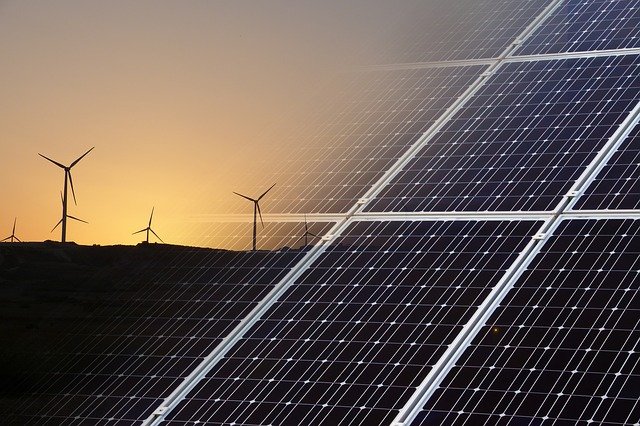
Financial PPAs and EMIR Reporting
In our webinar last week titled EMIR’s Present and Future, we highlighted some of the coming changes to coming regulation. In addition, we covered a few current trends firms should be aware of. Among them was the growth of Financial PPAs and how they fit under EMIR or other OTC derivative transaction reporting regimes such as those existing under the CFTC or ASIC. A product that more or less didn’t exist in 2014 when EMIR went into effect, the challenge of reporting financial PPAs is fitting them within the existing framework of the regulation.
What is a Financial PPA?
Power Purchase Agreements (PPA) are contracts between an energy producer and an energy buyer (the offtaker). The PPA covers the price and monthly energy production levels that the offtaker agrees to buy the energy during the duration of the contract, typically 10 or 20 years. The contract may contain periodic fixed or variable triggered price increases over the length of the PPA.
The advantage of a PPA arrangement is that it provides the energy seller an expected return on their production while the buyer has locked pricing for their own needs or what they will resell to other parties. Due to the expected pricing benefits, many renewable power producers have moved towards using PPAs as it helps them forecast their expected incoming cash flows to cover their debt and ongoing operation costs of the solar or wind farms they are building.
The disadvantage of a PPA is that it requires an offtaker to physically take possession of the energy production and have in place existing infrastructure for this process. The result is that this reduces the pool or potential energy buyers that a renewable energy firm can sell their futures production to.
As an alternative, Financial PPAs were created. With it, producers sell their energy production into local energy grid at spot prices. They simultaneously enter into a Financial PPA with another entity to hedge the expected long-term prices available in a standard PPA with spot prices. The Financial PPA acts as a derivative where the producer pays the offtaker if energy prices are above €10 while the offtaker pays the producer the difference when spot prices are below €10. They derivative payouts on the price differences are typically calculated monthly between the two firms.
As an example, a 10 year Physical PPA is based on the producer selling energy at €10/MWh. In the financial, the buyers agrees to guarantee this €10 price to the producer. On the other hand, the producer agrees to pay the offtaker any spot sales above €10. If in the first month, the producer sells at spot rates 10,000 MWh at an average of €110,000 and collect €1,100. Due to the arrangement of the Financial PPA, at the end of the month €10,000 is settled as the spot value above the fixed €10 rates and transferred by the producer to the offtaker. If the spot prices averaged at €9 that month, the offtaker would transfer €10,000 to the producer.
Green advantages
For offtakers, financial PPAs allow them to link their energy usage to renewable production. Although they aren’t the actual takers of the physical energy being produced, their involvement with the transactions assists renewable firms to set in place the fixed cashflows needed for building and maintaining renewable energy plants.
As a result of the benefits provided by Financial PPAs to helping grow renewable energy production, many countries and municipalities are providing tax or carbon credits when purchasing these products. In addition, a number of large corporations are able to better position themselves as ‘Green’ companies by partnering with renewable energy producers through Physical and Financial PPAs.
Back to EMIR
The bottom line is that financial PPAs are used as hedging contracts and therefore are under the category of a derivative. As such, EU and UK firms involved with them need to keep this in mind as they fall under scope of EMIR reporting. In addition, as commodity OTC derivatives, they would also fall under scope of similar regimes such as CFTC reporting under Dodd-Frank in the US and OTC reporting in Australia, Singapore, Japan and Hong Kong.
From an EMIR perspective, there are a few items to consider
Product type – Financial PPAs share characteristics similar to commodity swaps and CFDs. Commodity swaps operate with a swap of expected cash flows such as expected rates of Crude Oil versus processing fees. Any deviation in actual cash flows leads to a periodic settlement of the cash flow differences. With a CFD there is a payout when the contract is closed which is based on the difference in between preset prices to a closing period. Therefore, a financial PPA represents similarities to commodity swaps with their monthly adjustments but their underlying contract language often compares to that of CFDs with mention of payouts adjusted to differences like a CFD. This duality leads to the question of what is the proper product type and CFI codes to be used when describing the PPA within the EMIR product identifier fields.
NFC benefits – EMIR provides exemptions in its reporting requirements to NFC- firms. These are Non-Financial Counterparties (NFC) that hold positions below a set clearing threshold which is €3 billion yearly for commodity contracts. As most firms engaged with financial PPAs set up special purpose vehicles (SPC) for the purchase of the PPA, these are categorized as NFC companies and more likely than not to below the thresholds. As NFC- firms only the PPA opening and termination needs to reported; thus exempting under EMIR the need for reporting daily mark to market changes.
Mark to Market (MTM)– In cases where the report is submitted by a NFC-, as mentioned above, handling MTM isn’t a problem. However, how should a NFC+ or FC report the valuations? One view is to look at each payout cycle independently. Therefore, in the case of monthly settlements, the MTM would be a calculation of the current accumulated payout either as a positive or negative integer derived from the average spot prices that month. This format is similar to the calculation used for many forms of swaps.
A growing trend
Overall, the financial PPA market is expected to continue growing as large corporations and governments embrace the benefits of renewable energies. As more companies get involved it is expected to broaden the complexity of derivatives contracts to meet specific energy needs. This in turn will raise further questions of how PPAs fit within EMIR Reporting.
Learn more about solutions to report Financial PPAs and Cappitech – EMIR Reporting at Cappitech





